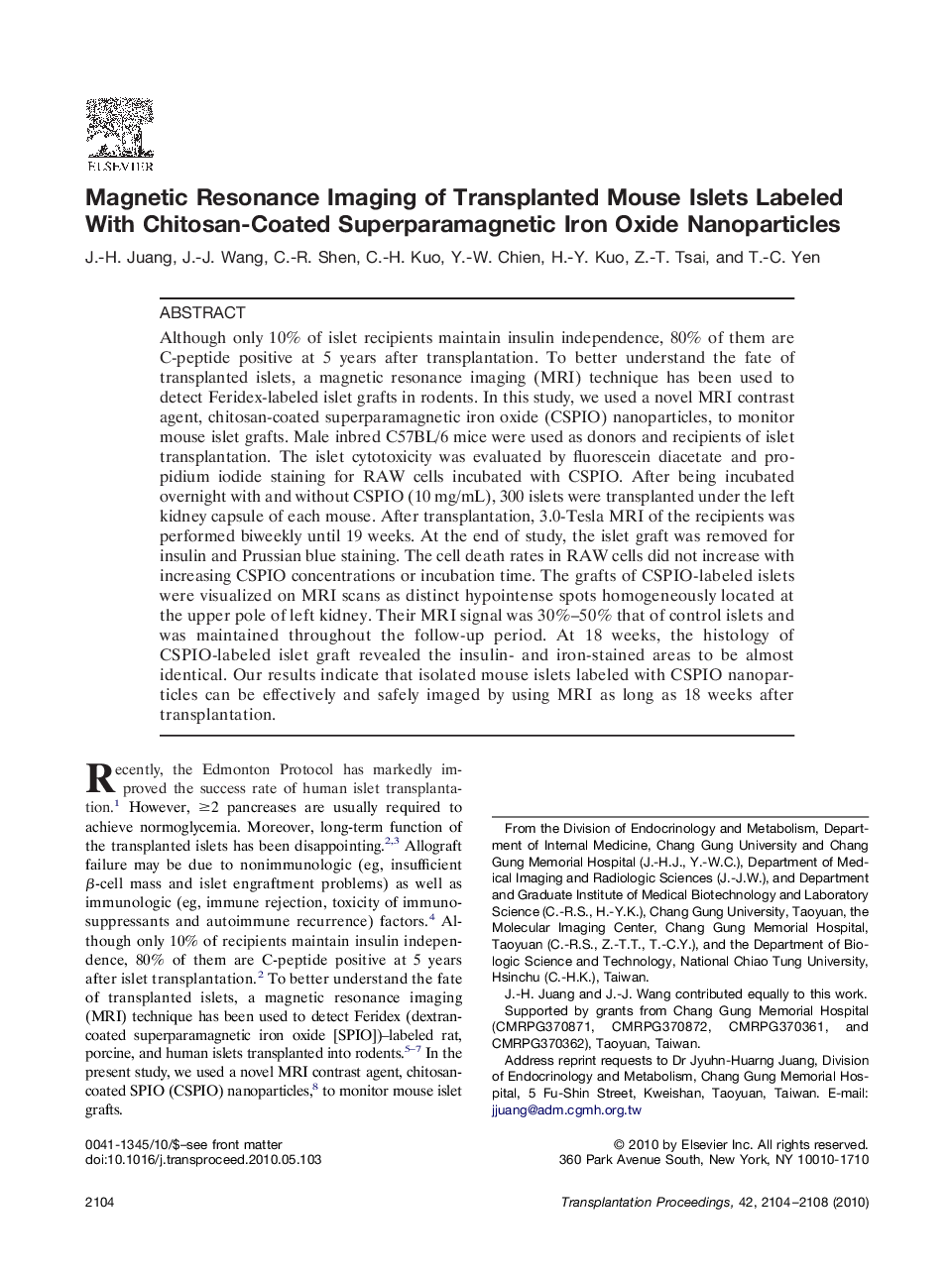| Article ID | Journal | Published Year | Pages | File Type |
|---|---|---|---|---|
| 4260735 | Transplantation Proceedings | 2010 | 5 Pages |
Although only 10% of islet recipients maintain insulin independence, 80% of them are C-peptide positive at 5 years after transplantation. To better understand the fate of transplanted islets, a magnetic resonance imaging (MRI) technique has been used to detect Feridex-labeled islet grafts in rodents. In this study, we used a novel MRI contrast agent, chitosan-coated superparamagnetic iron oxide (CSPIO) nanoparticles, to monitor mouse islet grafts. Male inbred C57BL/6 mice were used as donors and recipients of islet transplantation. The islet cytotoxicity was evaluated by fluorescein diacetate and propidium iodide staining for RAW cells incubated with CSPIO. After being incubated overnight with and without CSPIO (10 mg/mL), 300 islets were transplanted under the left kidney capsule of each mouse. After transplantation, 3.0-Tesla MRI of the recipients was performed biweekly until 19 weeks. At the end of study, the islet graft was removed for insulin and Prussian blue staining. The cell death rates in RAW cells did not increase with increasing CSPIO concentrations or incubation time. The grafts of CSPIO-labeled islets were visualized on MRI scans as distinct hypointense spots homogeneously located at the upper pole of left kidney. Their MRI signal was 30%–50% that of control islets and was maintained throughout the follow-up period. At 18 weeks, the histology of CSPIO-labeled islet graft revealed the insulin- and iron-stained areas to be almost identical. Our results indicate that isolated mouse islets labeled with CSPIO nanoparticles can be effectively and safely imaged by using MRI as long as 18 weeks after transplantation.
